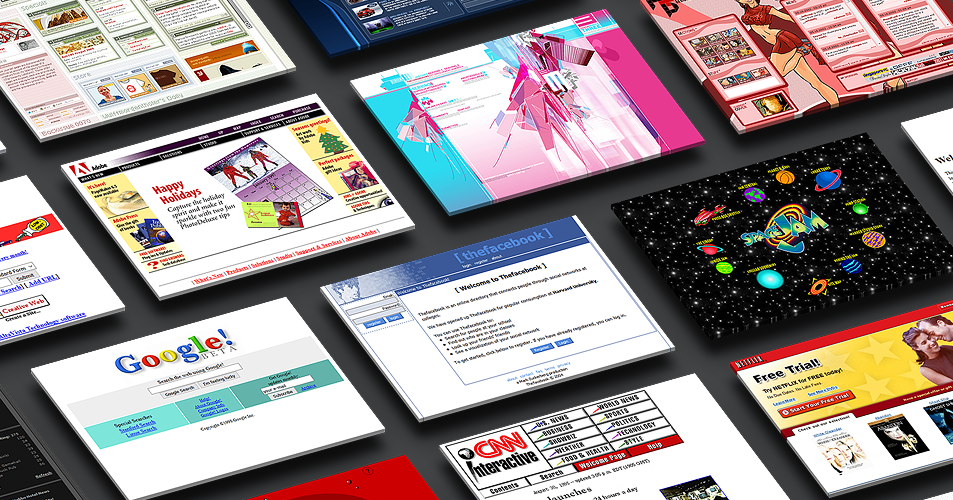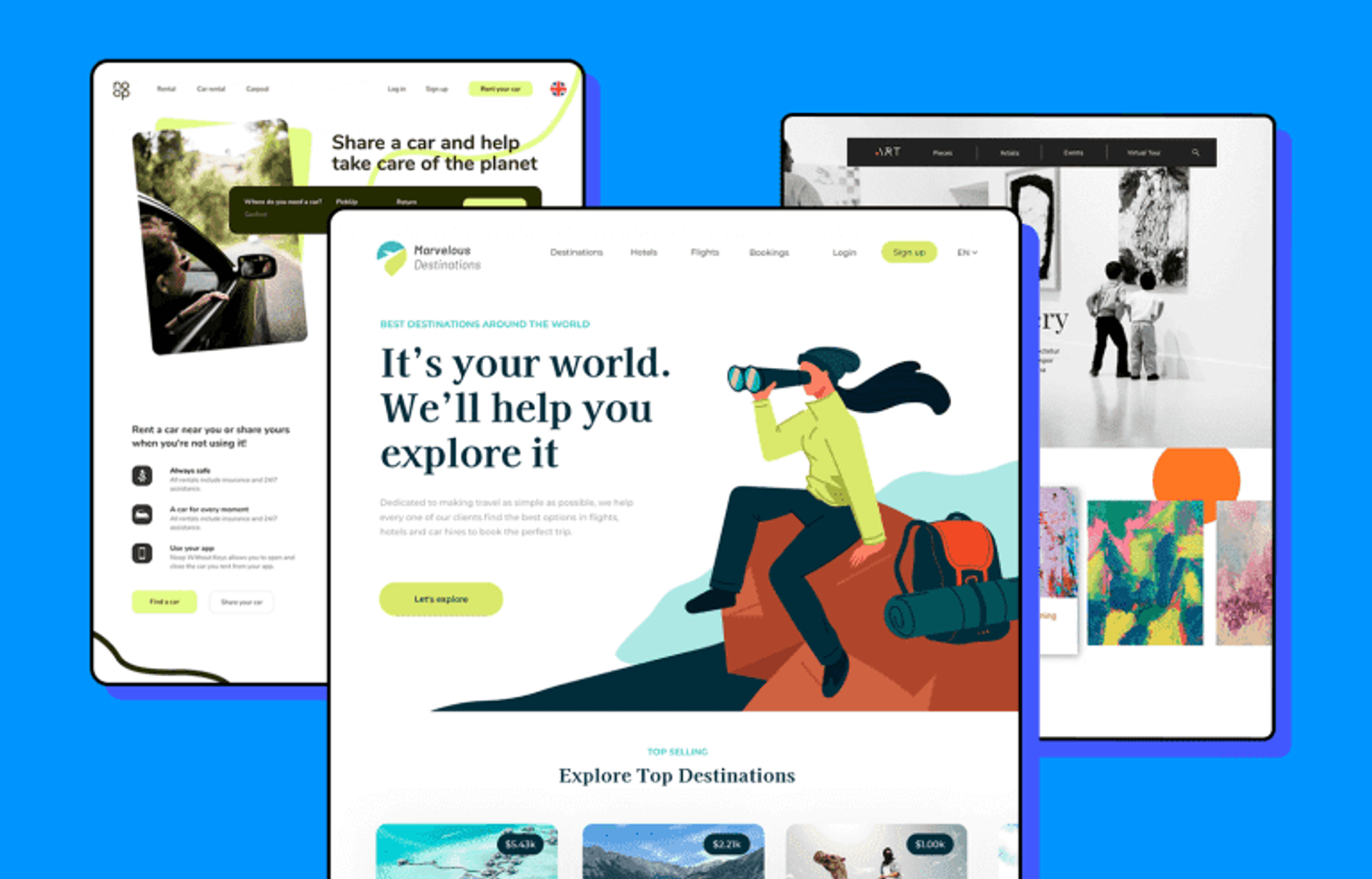How to Boost Individual Experience Through Strategic Internet Layout
In the world of digital innovation, user experience (UX) has come to be the linchpin of successful internet style. A tactical, user-centered method, stressing aesthetic consistency, user-friendly layouts, and receptive design, can substantially boost a site's usability and allure. As we discover these principles carefully, the importance of incorporating user feedback and the function of UX in user retention will additionally be taken a look at, welcoming a deeper understanding of this essential element of internet design.
Understanding the Importance of Individual Experience in Internet Style
The significance of website design exists not merely in aesthetics, however basically in the customer experience it uses. User experience, or UX, refers to the general experience an individual has while communicating with a site or internet application, particularly in terms of just how comfy and satisfying it is to utilize (Web Design In Guildford). It is an important element of internet design, as it directly influences the customers' impressions, actions, and overall communication with the website
A properly designed internet site with a poor customer experience belongs to a beautiful building with an improperly intended inside; it may look appealing on the surface, however it falls short to offer its designated purpose efficiently. It may prevent individuals from remaining on the web site, bring about high bounce prices, reduced customer engagement, and ultimately, failing to achieve the site's goals. This highlights the value of incorporating individual experience right into the website design procedure right from the beginning.
Applying User-Centered Style Concepts
The application of user-centered style principles starts with comprehending user habits. This understanding forms the basis for creating an effective user interface layout. These 2 vital components, when masterfully integrated, lead to an enhanced user experience on any internet site.

Understanding Individual Habits
Why do individuals act the means they do on websites? User habits is determined by a wide range of elements, principal amongst them being their details requirements and preferences, prior on-line experiences, and total web savviness. Using this understanding, internet developers can create more efficient, easy to use websites that fulfill the demands of their target market, thereby enhancing user experience.
Reliable Interface Style

Leveraging Responsive Style for Optimal Watching
Moving on in the discourse, the interest currently moves to the significance of leveraging receptive layout for ideal watching. This involves discovering the process of carrying out responsive web layout and comprehending its effect on user experience. The following conversation aims to illuminate the advantages of optimal watching and just how responsive style promotes it.
Carrying Out Receptive Website Design
Taking advantage of the power of responsive web design is a vital action towards boosting individual experience. These components incorporated create a receptive internet style that adjusts to the customer's needs. While the process may seem complex, the outcome is a more user-friendly and available website, dramatically boosting the user experience.
Advantages of Optimal Watching

Additionally, receptive layout can bring about improved SEO rankings, as online search engine favor websites that satisfy several devices. Lastly, it can minimize bounce rates and improve conversion prices as users are less most likely to abandon websites that are easy to browse. Hence, optimum viewing can substantially improve individual experience, making it a crucial element of critical internet layout.
Including Easy Navigation and Intuitive Layouts
Reduce and instinct in web site navigating create the bedrock of user fulfillment. If individuals struggle to find what they are searching for, they are likely to desert the internet site and look for options. A tactical web layout need to include clear, easy-to-follow navigating and an user-friendly layout. This can be attained by organizing information in an ordered structure, with one of the most essential areas prominently included.
Easy navigating menus, breadcrumb routes, and clickable buttons assist users via the web site effortlessly. Consistency in layout aspects throughout pages also adds to intuitive navigating. Putting the search bar or the buying cart symbol in the same area on every web page allows users to find these next attributes quickly.
Furthermore, an user-friendly format is one that anticipates user demands. It places aspects and info where customers anticipate them to be. This reduces the cognitive tons on individuals, improving their total experience on the website.
The Function of Visual Style in Individual Experience
While the framework and format of an internet site are significant for individual experience, the visual style plays a just as important role. It is the visual layout that initially draws the user's attention, making it an essential element in producing an immersive and interesting experience. Visual layout aspects such as shade, typography, photos, and symbols communicate the brand's message, create a mood, and overview customers' communications on the web page. A well-executed aesthetic design can not only attract customers yet additionally assist them understand the material much better and browse the site a lot more conveniently. A messy or inconsistent aesthetic style can confuse users and lead to a negative individual experience. Internet developers have to purposefully use aesthetic style elements to develop a user-friendly and harmonious customer interface that improves the total individual experience. This procedure needs a deep understanding of the target users, their requirements, and preferences, as well Check This Out as the brand name's identity and objectives.
Instance Studies: Effective Customer Experience Design in Action
In spite of the academic knowledge on customer experience design, it gets actual worth when used in useful situations. 2 significant study illustrate this. Airbnb, a global on-line market, efficiently boosted their individual experience by redesigning their site. By focusing on user responses, they created an extra instinctive, user-friendly user interface that considerably improved scheduling experiences. This caused enhanced customer fulfillment and conversion prices.
The outcomes were a considerable rise in mobile web traffic and individual engagement, showing the efficiency of tactical web layout in boosting individual experience. These situation research studies reveal that useful application of customer experience design can yield significant advantages.
Conclusion
To conclude, strategic internet design is an important device in boosting customer experience. By using user-centric design principles, leveraging receptive design, integrating intuitive navigation and layouts, and harnessing the power of aesthetic design, companies can produce sites that are satisfying and involving for individuals. Efficient web style, showcased through various effective study, considerably increases customer engagement and retention prices, verifying its crucial role in digital success.
As we check out these concepts in information, the relevance of incorporating customer feedback and the role of UX in individual retention will also be checked out, inviting a much deeper understanding of this crucial element of internet design.
It might deter individuals from remaining on the website, leading to high bounce prices, low user involvement, and eventually, failure to attain the website's goals. A chaotic or inconsistent aesthetic style can lead and confuse individuals to an adverse user experience. Web developers have to purposefully make use of visual design elements to develop a unified and instinctive user interface that boosts the overall customer experience. The outcomes were a substantial boost in mobile traffic and user engagement, showing the effectiveness of calculated web design in boosting individual experience.